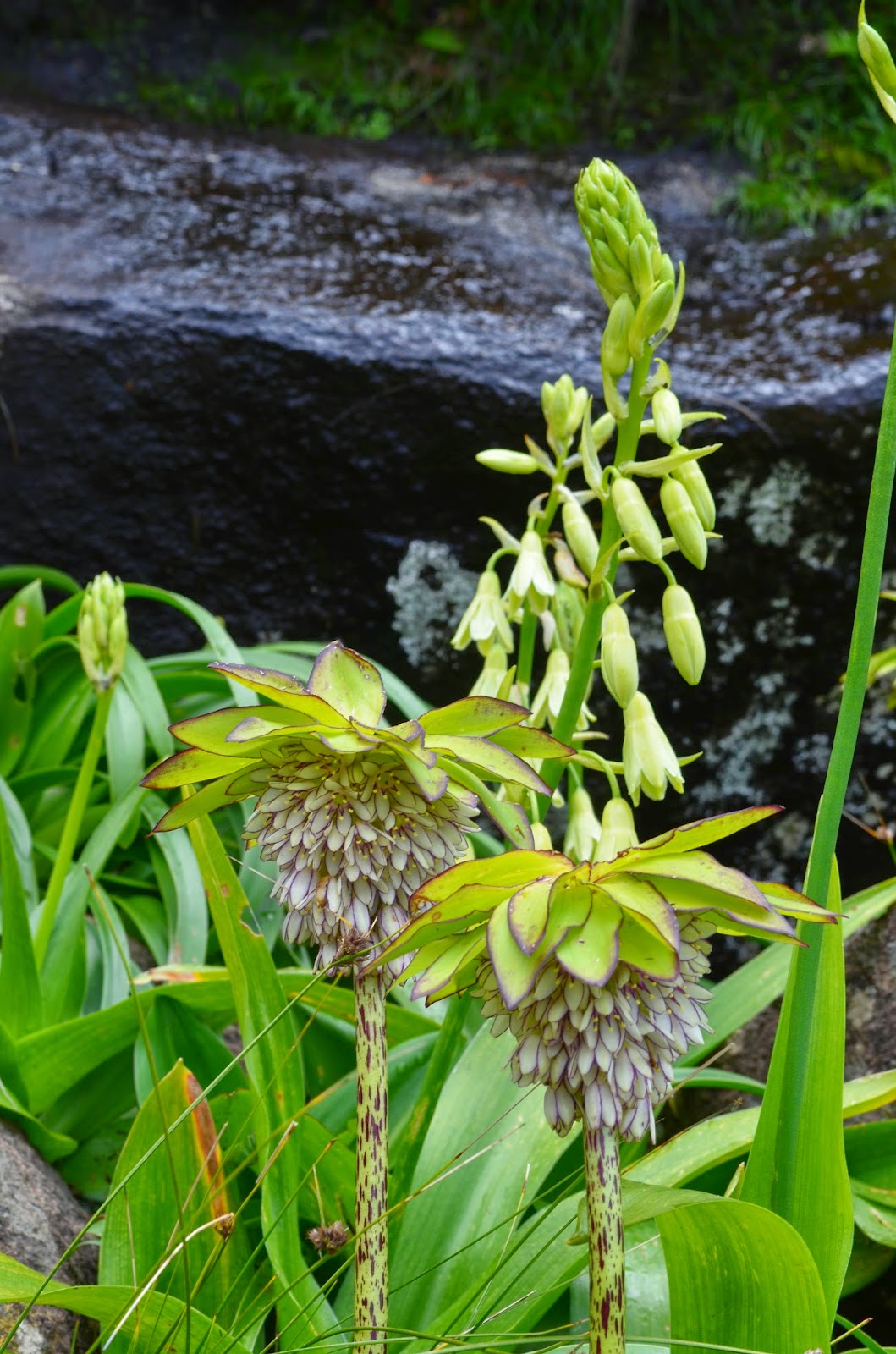The lack of posts and lack of pots here and on the Skyviewsucculents.com page are due to a trip to the Drakensberg mountains. This is the first part of the adventure. The trip was led by Guillermo Rivera and Panayoti Kelaidis, with a group coming mostly from Denver, but also California, Washington D.C., Boston and Idaho. It was a wonderful set of people to share a bus and a horticultural explorations with. The rest of this blog is a few scenery pictures, but mostly the wonderful flora.
Witshieshoek grassland, looking south into Lesotho.
Eucomis humilis at Witshieshoek (Not so sure about the purple one in the middle) We were thrilled to find all the bulbs, many of them Eucomis and Brunsvigia, on the hills around Witsieshoek. Some of the Brunsvigia were in seed, but the flowers were all spent. This was made up for the next day, when we were a few hundred feet higher.
The Drakensbergs are in the summer rainfall region, with hundreds of waterfalls.
The next morning was a trek to Sentenial Peak. Already on the trail and photographing plants. The trail zig zags up the slope. The top is at 9500', the trails starts over 8000'. I didn't make it to the top, stopping somewhere near the top of the first set of large rocks.
Moraea vigilans plentiful on the early part of the trail.
Hesperantha baurii ssp baurii were everywhere.
Dierama robusta were plentiful, but moving so much in the wind, that it was nearly impossible to photograph. This is summer, I was wearing a t-shirt, a sweatshirt and a windbreaker.
Eucomis bicolor, by the hundreds.
More Eucomis, mostly humilis this time, looking North into South Africa.
Eucomis and Galtonia
The cliffs held caves with hidden wonders.
That little white spot just to the right of center in the darkest patch of rock.
Clearly Streptocarpus
Streptocarpus pentherianus
Amazing steep slopes, all covered with bulbs and miniature shrubs.
This is the home of Agapanthus campanulatus, appearing in many shades of blue from powder blue to dark almost purple clones.
Gernanium magniflorum, one of several species present.
Brunsvigia natalensis growing in grass.
Another clone
And another.
I began to appreciate Berkheya in this part of the trip, finding it more and more interesting as the trip progressed. Helichrysums were well represented here as well, and even more so later in the trip.






















